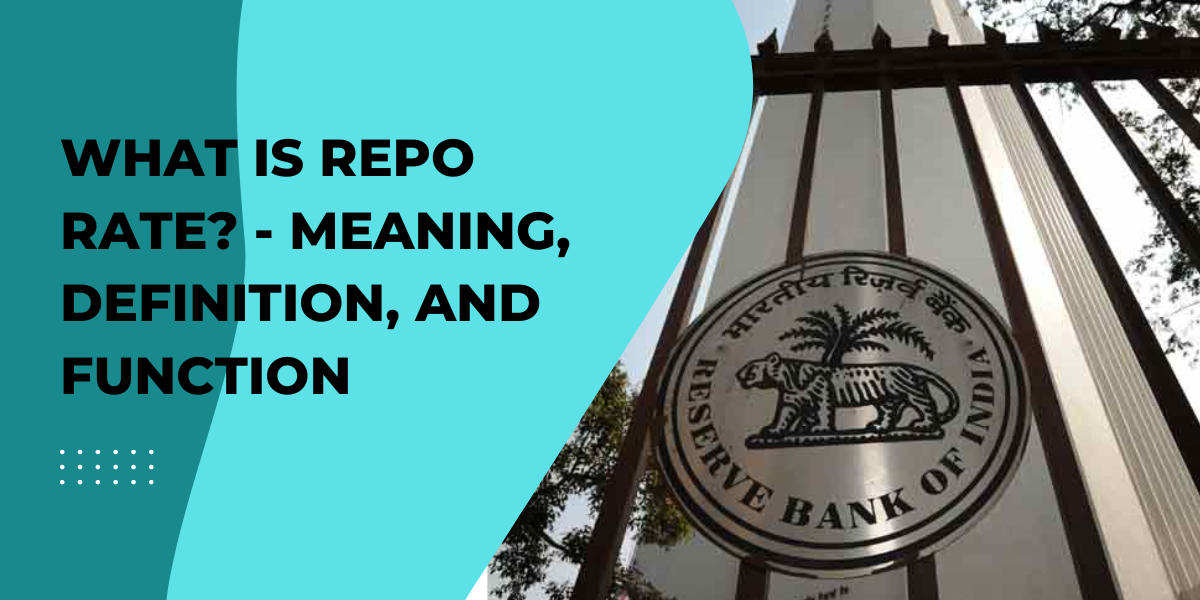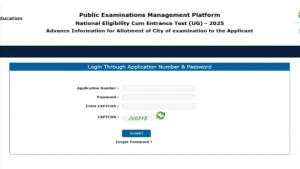Table of Contents
What is Repo Rate?
Repo Rate: The interest rate at which the Reserve Bank of India (RBI) lends money to commercial banks in the event of a funding shortage is known as the repo rate.
Monetary authorities (In the case of India, RBI ) use the repo rate to keep inflation under control. In this article, we are going to learn more about the Repo rate, its function, and its related terms.
Repo Rate Meaning
The phrase ‘REPO’ stands for ‘Repurchasing Option’ Rate and is also referred to as the ‘Repurchasing Agreement’. In times of financial stress, people take out bank loans and pay interest on them. Similarly, commercial banks and financial institutions are experiencing a funding shortfall. They can also take loans from the central bank of the country. Any country’s central bank provides capital to commercial banks at a fixed interest rate on the outstanding sum.
“Policy rates” spur the economy of every nation. In layman’s terms, policy rates or Repo Rate are the central bank’s monetary tools that are used to maintain price stability, maintain adequate day-to-day liquidity in the system, and thus ascertain functioning bank rates. Key interest rates and reserve ratios:
1. Repo rate, also known as repositioning rate
2. Reverse Repo Rate
3. Salutary Lending Ratio (SLR)
4. Cash Reserves Ratio (CRR)
Paris Olympics 2024 Mascot, Logo, Theme, Schedule
What is Repo rate in banking- How it Works?
In times of inflation, central banks raise the repo rate because doing so discourages banks from borrowing from them. Increases in the repo rate discourage banks from borrowing money, lowering the amount of money in the market and aiding in the prevention of inflation. Repo rates are also reduced during a recession.
An increase in the repo rate requires commercial banks to pay higher interest on money lent to them, and so a change in the repo rate eventually affects public borrowings such as home loans, EMIs, and so on.
Tokyo Olympics 2021 India Medals, Medal Tally, Theme, Mascot
What is Repo Rate RBI
Following the recent climb by the Reserve Bank of India, the repo rate now stands at 6.25%, the same extent as in February 2019. The repo rate remained unchanged at 4% from May 2020 to May 2022. The recent ascending movement began in May 2022, when the apex bank decided to control the economy’s prevailing inflationary trends. The majority of us are likely to have unresolved questions about the repo rate’s significance and gyrations.
The RBI enforced that banks link their lending rates to external benchmarks in October 2019. The repo rate was chosen as the external benchmark by the vast majority of banks. As a result, the repo rate influences interest rates on all loans, including private loans, car loans, home loans, and working capital, among others. Then there is the unavoidable impact on fixed deposit and savings account rates.
Neeraj Chopra Wins First-Ever Gold in Athletics For India in Olympics
What is Reverse Repo Rate
Reverse Repo Rate represents the interest rate at which banks deposit their funds with the RBI. All banks are required to maintain statutory reserves with the RBI in accordance with the specified ratio of cash reserve and statutory liquidity ratio (SLR). Banks quite often produce excess cash, which can be accumulated with the RBI (at varying tenors). As a result, the reverse repo rate is the income received by banks on funds placed with the RBI.
The reverse repo rate is used to control the market income stream, whereas the repo rate is used to control liquidity in the economy. In order to encourage commercial banks to make deposits in the central bank and earn returns, the RBI increases the reverse repo rate when the economy experiences inflation.
NATO Countries Names List and Map 2023
Repo Rate Increase
The Reserve Bank of India (RBI) is intended to increase interest rates by 25 basis points (bps) to 6.50% at its meeting following the February 1 Union Budget 2023, according to a Reuters poll of economic experts. With the December rate increase, the policy repo rate has risen to 225 basis points (bps) so far in FY23. The repo rate is currently 6.25%. For FY23, the RBI raised rates by 40 basis points in May, followed by three consecutive rate hikes of 50 basis points each from June to October, and then some softening to 35 basis points in December policy. Another rate hike by the RBI will make fixed deposits more appealing In February, the central bank is expected to raise the repo rate. Depositors will have another reason to rejoice when the RBI raises the policy repo rate because both fixed deposits and lending rates are likely to rise as well. Since May, banks have aggressively raised their FD rates in response to the RBI’s policy outcomes, making this investment option already appealing.
Union Budget 2023 Date, Income Tax and Expectations
What is Repo Rate in India
In December 2022, the Monetary Policy Committee (MPC) declared that the repo rate had been raised by 35 basis points to 6.25%. During its conference, the MPC decided to maintain the reverse repo rate at 3.35%. The Bank Rate and the marginal standing facility (MSF) rate have both changed to 6.50%.
Current Gross Domestic Product (GDP) of India 2023
What is Repo Rate and bank Rate
Repo rate and bank rate are relatively common terms in the baking industry. Bank rate is the interest rate levied on loans made by the central bank to commercial banks, whereas repo rate is the interest rate at which the RBI lends to commercial banks by purchasing securities. When charging Bank Rate, no collateral is involved; however, when charging Repo Rate, securities, bonds, agreements, and collateral are involved.
Manchester of India 2023- Ahmedabad
What is Repo Rate in Hindi
भारतीय रिज़र्व बैंक (RBI) जिस ब्याज दर पर धन की कमी की स्थिति में वाणिज्यिक बैंकों को पैसा उधार देता है, उसे रेपो दर के रूप में जाना जाता है।
मौद्रिक प्राधिकरण (भारत के मामले में, आरबीआई) मुद्रास्फीति को नियंत्रण में रखने के लिए रेपो दर का उपयोग करते हैं। इस लेख में, हम रेपो रेट, इसके कार्य और इससे संबंधित शर्तों के बारे में अधिक जानने जा रहे हैं।
वाक्यांश ‘रेपो’ का अर्थ ‘पुनर्खरीद विकल्प’ दर है और इसे ‘पुनर्खरीद समझौते’ के रूप में भी जाना जाता है। वित्तीय संकट के समय में लोग बैंक ऋण लेते हैं और उस पर ब्याज देते हैं। इसी तरह, वाणिज्यिक बैंक और वित्तीय संस्थान धन की कमी का सामना कर रहे हैं। वे देश के केंद्रीय बैंक से भी ऋण ले सकते हैं। किसी भी देश का केंद्रीय बैंक बकाया राशि पर एक निश्चित ब्याज दर पर वाणिज्यिक बैंकों को पूंजी प्रदान करता है।
“नीतिगत दरें” हर देश की अर्थव्यवस्था को गति देती हैं। आम आदमी की शर्तों में, नीतिगत दरें या रेपो दर केंद्रीय बैंक के मौद्रिक उपकरण हैं जिनका उपयोग मूल्य स्थिरता बनाए रखने, सिस्टम में दिन-प्रतिदिन पर्याप्त तरलता बनाए रखने के लिए किया जाता है, और इस प्रकार कार्यशील बैंक दरों का पता लगाया जाता है। प्रमुख ब्याज दरें और आरक्षित अनुपात:
1. रेपो रेट, जिसे रिपोजिशनिंग रेट भी कहा जाता है
2. रिवर्स रेपो रेट
3. सैल्यूटरी लेंडिंग रेश्यो (एसएलआर)
4. नकद आरक्षित अनुपात (सीआरआर)






 NEET City Intimation Slip 2025 Out at ne...
NEET City Intimation Slip 2025 Out at ne...
 CUET Chapter Wise Weightage 2025 for Sci...
CUET Chapter Wise Weightage 2025 for Sci...
 [Live Update] UP Board Result 2025 Class...
[Live Update] UP Board Result 2025 Class...










